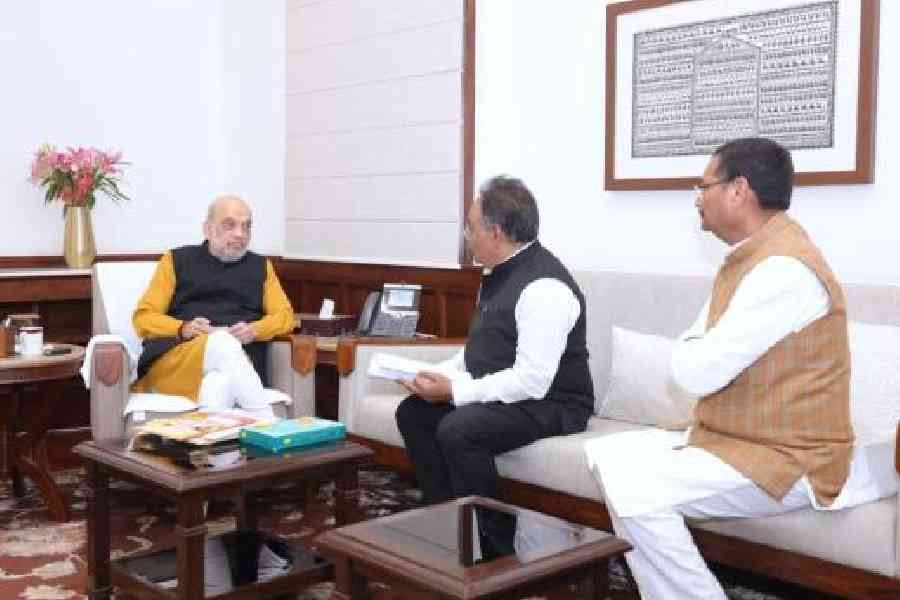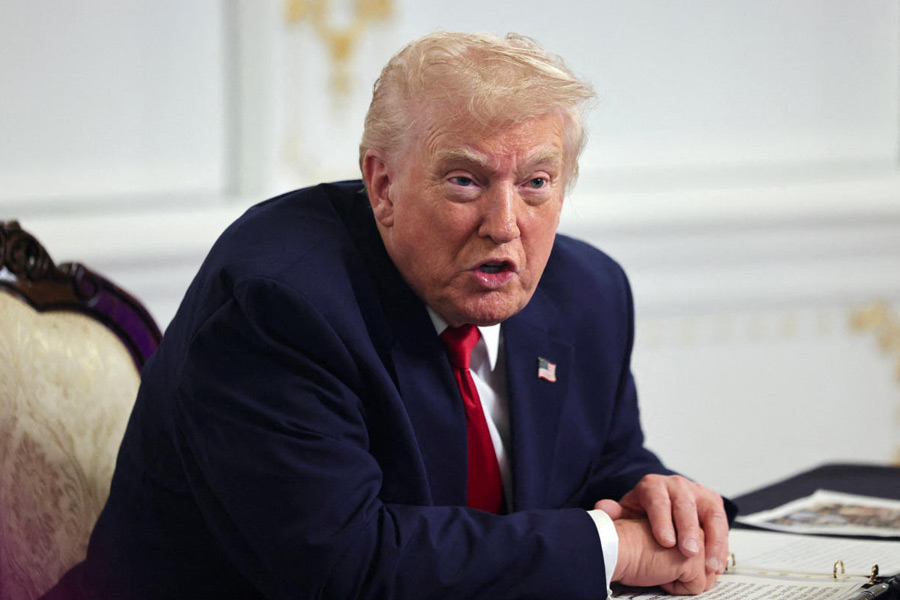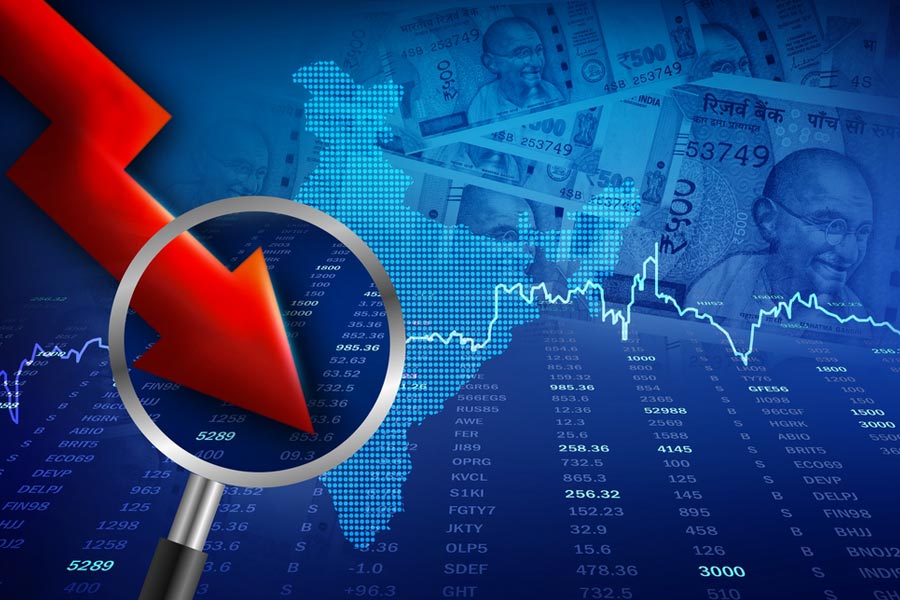As the conflict in Ukraine continues, Europe’s deep-seated reliance on the United States of America for military hardware and strategic support has emerged as a crippling vulnerability. The dramatic shifts in the US’s policy towards NATO and Russia under President Donald Trump have starkly underscored this dependency. Europe now faces an existential challenge: to rapidly bolster its defence capabilities or risk being left exposed in the face of aggressive neighbours. The ongoing war in Ukraine starkly illustrates this dilemma as European nations struggle to sustain the military effort against Vladimir Putin’s invasion without American backing. Despite plans to increase defence spending, Europe’s inability to produce critical military equipment and its lack of strategic autonomy threaten to undermine its security posture, leaving it vulnerable to Russian aggression and reliant on uncertain American commitments.
Europe’s predicament holds a significant lesson for India as it navigates the demands from the Trump administration for a closer defence relationship. In the first telephone call following Trump’s re-election, the US president had urged Prime Minister Narendra Modi to purchase more defence equipment and weapons from the US. Trump reiterated this demand publicly after meeting Modi at the White House, suggesting that India should acquire the expensive F-35 fighter jet from the US. Earlier this month, speaking at a media event in Delhi, the US commerce secretary, Howard Lutnick, asked India to shift its defence equipment purchases from Russia to American products. “India has historically bought significant amounts of its military equipment from Russia, and we think that is something that needs to end,” he demanded.
India has a favourable trade balance with the US, making it a target for Trump’s policies aimed at reducing trade deficits with major partners. The Modi government has focused on energy supplies from the US to address this issue despite American crude being more expensive than that offered by traditional suppliers in Central Asia or by Russia which involves significant discounts and lower landing costs. Since US shale crude is mostly light and sweet, many Indian refineries cannot process it efficiently. While some refineries can handle US crude, most would require infrastructure upgrades or operational adjustments, making large-scale imports from the US less appealing. For the Modi government, it will be challenging to persuade private refiners to adopt this unappealing path. Recently, Mukesh Ambani’s Reliance and Russia’s Rosneft signed a 10-year deal, with a potential for extension, for India’s largest refiner to import nearly 500,000 barrels of crude oil daily, worth approximately $13 billion annually.
The US goods trade deficit with India was $45.7 billion in 2024. Indian officials suggest that at best, the country can import an additional $10 billion worth of American crude oil. This is unlikely to satisfy Trump, who will intensify his insistence that New Delhi purchase more military equipment from the US. Given the manner in which the Modi government has so far acquiesced to Trump’s demands, it is highly unlikely that India will resist these pressures. These requests will be accompanied by threats, making it difficult for the Modi government to ignore them, especially as it seeks to address the strategic challenge posed by China. Most world capitals, including Beijing and Washington D.C., are aware that India needs the US’s support to counter China, as was evident during the border crisis in 2020.
In New Delhi, the temptation will be to succumb to Trump’s threats, with the Modi government potentially using regime-friendly media to spin a favourable narrative around such capitulation. However, India cannot ignore the strategic consequences of such a move. When a country relies heavily on another for military equipment, it creates a dependency that can limit its strategic flexibility. The supplying country gains leverage over the recipient’s foreign policy decisions. For instance, the US might use arms sales as a tool to influence India’s stance on various global issues. This dependency risks drawing India into US-led security frameworks in the region, potentially crippling New Delhi’s strategic autonomy.
It is crucial to remember that the procurement of American weaponry would be due to coercion rather than being a strategic diversification move aimed at reducing dependency on Russia and enhancing India’s indigenous military capabilities. Trump has made it clear that US defence sales will not be accompanied by technology sharing or co-production agreements that are crucial for India’s military modernisation and indigenous manufacturing capabilities. Since these transactions are viewed as commercial in Trump’s worldview, India’s increased defence purchases from the US will not reflect a deepening of the strategic partnership between the two countries. Major arms sales can also lead to regional instability in South Asia by fuelling arms races or prolonging conflicts, as seen in regions like the Middle East.
Moreover, as many former US allies have learnt the hard way, such transactions carry significant risks. The US Congress or a new administration can raise political concerns about the Modi government, such as human rights issues, ill-treatment of religious minorities, or democratic backsliding, and can block future sales or supply of spare parts and ammunition. American weapons are also far more expensive than Russian alternatives, necessitating significant financial commitments from India. Under Modi, India’s defence budget is at its lowest ever as a share of the country’s GDP and the economy is not performing well enough to support such extravagant expenditures. Transitioning from one arms supplier to another involves significant costs, including adopting new systems and training personnel. These costs can create dependency on the current supplier, which may then put India under greater pressure.
If the Modi government finds itself in a bind, it has no one to blame after more than a decade of authoritarian rule. Instead of building India’s defence capabilities, the government prioritised empty slogans and the politicisation of the armed forces for electoral gains. By increasing its dependence on the US to deal with China, New Delhi created a weakness that Trump is happy to exploit. Modi’s supporters were banking on his extreme-Right affinity with Trump to bail him out but as the recent weeks have shown, the Hindutva heartthrob must now confront the daunting task of securing India’s strategic objectives in an increasingly uncertain world dominated by Trump.
Sushant Singh is lecturer at Yale University










